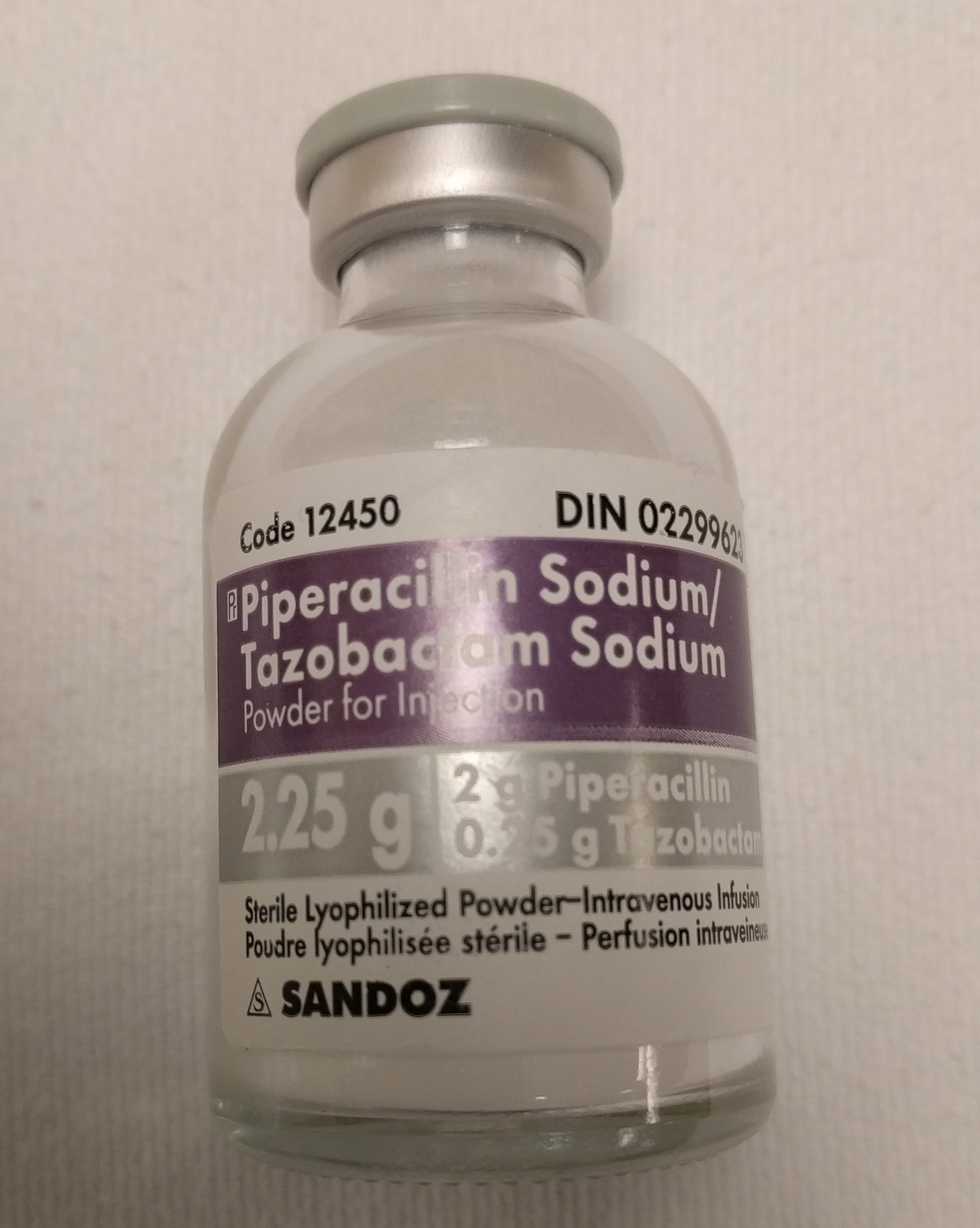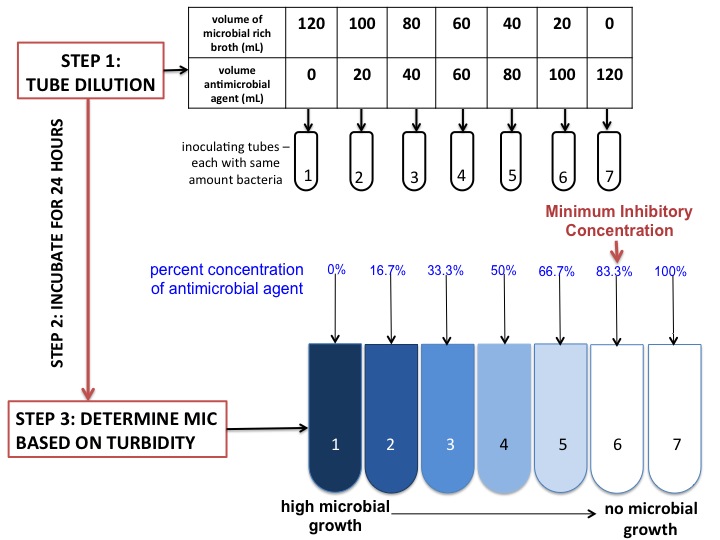|
Piperacillin
Piperacillin is a broad-spectrum β-lactam antibiotic of the ureidopenicillin class. The chemical structure of piperacillin and other ureidopenicillins incorporates a polar side chain that enhances penetration into Gram-negative bacteria and reduces susceptibility to cleavage by Gram-negative beta lactamase enzymes. These properties confer activity against the important hospital pathogen ''Pseudomonas aeruginosa''. Thus piperacillin is sometimes referred to as an "anti-pseudomonal penicillin". When used alone, piperacillin lacks strong activity against the Gram-positive bacteria, Gram-positive pathogens such as ''Staphylococcus aureus'', as the beta-lactam ring is hydrolyzed by the bacteria's beta-lactamase. It was patented in 1974 and approved for medical use in 1981. Piperacillin is most commonly used in combination with the β-Lactamase inhibitor, beta-lactamase inhibitor tazobactam (piperacillin/tazobactam), which enhances piperacillin's effectiveness by inhibiting many bet ... [...More Info...] [...Related Items...] OR: [Wikipedia] [Google] [Baidu] |
Piperacillin/tazobactam
Piperacillin/tazobactam, sold under the brand name Tazocin among others, is a combination medication containing the antibiotic piperacillin and the β-lactamase inhibitor tazobactam. The combination has activity against many Gram-positive and Gram-negative bacteria including ''Pseudomonas aeruginosa''. It is used to treat pelvic inflammatory disease, intra-abdominal infection, pneumonia, cellulitis, and sepsis. It is given by injection into a vein. Common adverse effects include headache, trouble sleeping, rash, nausea, constipation, and diarrhea. Serious adverse effects include ''Clostridioides difficile'' infection and allergic reactions including anaphylaxis. Those who are allergic to other β-lactam are more likely to be allergic to piperacillin/tazobactam. Use in pregnancy or breastfeeding appears to generally be safe. It usually results in bacterial death through blocking their ability to make a cell wall. Piperacillin/tazobactam was approved for medical use in the ... [...More Info...] [...Related Items...] OR: [Wikipedia] [Google] [Baidu] |
Ureidopenicillin
The ureidopenicillins are a group of penicillins which are active against ''Pseudomonas aeruginosa''. There are three ureidopenicillins in clinical use: * Azlocillin * Piperacillin * Mezlocillin They are mostly ampicillin derivatives in which the amino acid side chain has been converted to a variety of cyclic ureas. It is speculated that the added side chain mimics a longer segment of the peptidoglycan chain, more than ampicillin, and thus would bind more easily to the penicillin-binding proteins. Ureidopenicillins are not resistant to beta-lactamases. They are used parenterally, and are particularly indicated in infections caused by Gram-negative bacteria Bacteria (; : bacterium) are ubiquitous, mostly free-living organisms often consisting of one Cell (biology), biological cell. They constitute a large domain (biology), domain of Prokaryote, prokaryotic microorganisms. Typically a few micr .... References {{Cell wall disruptive antibiotics Penicillins ... [...More Info...] [...Related Items...] OR: [Wikipedia] [Google] [Baidu] |
Gram-negative Bacteria
Gram-negative bacteria are bacteria that, unlike gram-positive bacteria, do not retain the Crystal violet, crystal violet stain used in the Gram staining method of bacterial differentiation. Their defining characteristic is that their cell envelope consists of a thin peptidoglycan gram-negative cell wall, cell wall sandwiched between an inner (Cytoplasm, cytoplasmic) Cell membrane, membrane and an Bacterial outer membrane, outer membrane. These bacteria are found in all environments that support life on Earth. Within this category, notable species include the model organism ''Escherichia coli'', along with various pathogenic bacteria, such as ''Pseudomonas aeruginosa'', ''Chlamydia trachomatis'', and ''Yersinia pestis''. They pose significant challenges in the medical field due to their outer membrane, which acts as a protective barrier against numerous Antibiotic, antibiotics (including penicillin), Detergent, detergents that would normally damage the inner cell membrane, and the ... [...More Info...] [...Related Items...] OR: [Wikipedia] [Google] [Baidu] |
Febrile Neutropenia
Febrile neutropenia is the development of fever, often with other signs of infection, in a patient with neutropenia, an abnormally low number of neutrophil granulocytes (a type of white blood cell) in the blood. It is an oncologic emergency, and is the most common serious complication in patients with hematopoietic cancers or receiving chemotherapy for cancer. The term neutropenic sepsis is also applied, although it tends to be reserved for patients who are less well. In 50% of cases, an infection is detectable; bacteremia (bacteria in the bloodstream) is present in approximately 20% of all patients with this condition. Definition Febrile neutropenia or neutropenic fever is a defined as a single oral temperature value of ≥ 38.3 C (101 F) or a temperature ≥ 38 C (100.4 F) for ≥ 1 hour, with an absolute neutrophil count (ANC) < 1500 cell/microliter. In case of severe neutropenia, the ANC is < 500 cell/microliter. In profoundly severe neu ... [...More Info...] [...Related Items...] OR: [Wikipedia] [Google] [Baidu] |
β-Lactamase Inhibitor
Beta-lactamases are a family of enzymes involved in bacterial antimicrobial resistance, resistance to β-lactam antibiotic, beta-lactam antibiotics. In bacterial resistance to beta-lactam antibiotics, the bacteria have beta-lactamase which degrade the beta-lactam rings, rendering the antibiotic ineffective. However, with beta-lactamase inhibitors, these enzymes on the bacteria are inhibited, thus allowing the antibiotic to take effect. Strategies for combating this form of resistance have included the development of new beta-lactam antibiotics that are more resistant to cleavage and the development of the class of enzyme inhibitors called beta-lactamase inhibitors. Although β-lactamase inhibitors have little antibiotic activity of their own, they prevent bacterial degradation of beta-lactam antibiotics and thus extend the range of bacteria the drugs are effective against. Medical uses The most important use of beta-lactamase inhibitors is in the treatment of infections known or ... [...More Info...] [...Related Items...] OR: [Wikipedia] [Google] [Baidu] |
Bloodstream Infections
Bloodstream infections (BSIs) are infections of blood caused by blood-borne pathogens. The detection of microbes in the blood (most commonly accomplished by blood cultures) is always abnormal. A bloodstream infection is different from sepsis, which is characterized by severe inflammatory or immune responses of the host organism to pathogens. Bacteria can enter the bloodstream as a severe complication of infections (like pneumonia or meningitis), during surgery (especially when involving mucous membranes such as the gastrointestinal tract), or due to catheters and other foreign bodies entering the arteries or veins (including during intravenous drug abuse). Transient bacteremia can result after dental procedures or brushing of teeth. Bacteremia can have several important health consequences. Immune responses to the bacteria can cause sepsis and septic shock, which, particularly if severe sepsis and then septic shock occurs, have high mortality rates, especially if not treated q ... [...More Info...] [...Related Items...] OR: [Wikipedia] [Google] [Baidu] |
Imipenem
Imipenem (trade name Primaxin among others) is a synthetic beta-lactam, β-lactam antibiotic belonging to the carbapenems chemical class. developed by Merck scientists Burton Christensen, William Leanza, and Kenneth Wildonger in the mid-1970s. Carbapenems are highly resistant to the β-lactamase enzymes produced by many multiple drug-resistant Gram-negative bacteria, thus playing a key role in the treatment of infections not readily treated with other antibiotics. It is usually administered through intravenous injection. Imipenem was patented in 1975 and approved for medical use in 1985. It was developed via a lengthy trial-and-error search for a more stable version of the natural product thienamycin, which is produced by the bacterium ''Streptomyces cattleya''. Thienamycin has antibacterial activity, but is unstable in aqueous solution, thus it is practically of no medicinal use. Imipenem has a broad spectrum of activity against Aerobic organism, aerobic and Anaerobic organism, a ... [...More Info...] [...Related Items...] OR: [Wikipedia] [Google] [Baidu] |
Intravenous Therapy
Intravenous therapy (abbreviated as IV therapy) is a medical technique that administers fluids, medications and nutrients directly into a person's vein. The intravenous route of administration is commonly used for rehydration or to provide nutrients for those who cannot, or will not—due to reduced mental states or otherwise—consume food or water per os, by mouth. It may also be used to administer pharmaceutical drug, medications or other medical therapy such as blood transfusion, blood products or electrolytes to correct electrolyte imbalances. Attempts at providing intravenous therapy have been recorded as early as the 1400s, but the practice did not become widespread until the 1900s after the development of techniques for safe, effective use. The intravenous route is the fastest way to deliver medications and fluid replacement throughout the body as they are introduced directly into the circulatory system and thus quickly distributed. For this reason, the intravenous route ... [...More Info...] [...Related Items...] OR: [Wikipedia] [Google] [Baidu] |
Intramuscular Injection
Intramuscular injection, often abbreviated IM, is the medical injection, injection of a substance into a muscle. In medicine, it is one of several methods for parenteral, parenteral administration of medications. Intramuscular injection may be preferred because muscles have larger and more numerous blood vessels than subcutaneous tissue, leading to faster absorption than subcutaneous injection, subcutaneous or intradermal injections. Medication administered via intramuscular injection is not subject to the first-pass metabolism effect which affects oral medications. Common sites for intramuscular injections include the deltoid muscle of the upper arm and the gluteal muscle of the buttock. In infants, the vastus lateralis muscle of the thigh is commonly used. The injection site must be cleaned before administering the injection, and the injection is then administered in a fast, darting motion to decrease the discomfort to the individual. The volume to be injected in the muscle is ... [...More Info...] [...Related Items...] OR: [Wikipedia] [Google] [Baidu] |
Intravenous Therapy
Intravenous therapy (abbreviated as IV therapy) is a medical technique that administers fluids, medications and nutrients directly into a person's vein. The intravenous route of administration is commonly used for rehydration or to provide nutrients for those who cannot, or will not—due to reduced mental states or otherwise—consume food or water per os, by mouth. It may also be used to administer pharmaceutical drug, medications or other medical therapy such as blood transfusion, blood products or electrolytes to correct electrolyte imbalances. Attempts at providing intravenous therapy have been recorded as early as the 1400s, but the practice did not become widespread until the 1900s after the development of techniques for safe, effective use. The intravenous route is the fastest way to deliver medications and fluid replacement throughout the body as they are introduced directly into the circulatory system and thus quickly distributed. For this reason, the intravenous route ... [...More Info...] [...Related Items...] OR: [Wikipedia] [Google] [Baidu] |
Minimum Inhibitory Concentration
In microbiology, the minimum inhibitory concentration (MIC) is the lowest concentration of a chemical, usually a drug, which prevents visible ''in vitro'' cell growth, growth of bacteria or Fungus, fungi. MIC testing is performed in both diagnostic and drug discovery laboratories. The MIC is determined by preparing a Serial dilution, dilution series of the chemical, adding agar dilution, agar or broth microdilution, broth, then inoculating with bacteria or fungi, and incubating at a suitable temperature. The value obtained is largely dependent on the susceptibility of the microorganism and the antimicrobial potency of the chemical, but other variables can affect results too. The MIC is often expressed in micrograms per milliliter (μg/mL) or milligrams per liter (mg/L). In diagnostic labs, MIC test results are used to grade the susceptibility of microbes. These grades are assigned based on agreed upon values called breakpoints. Breakpoints are published by standards organizati ... [...More Info...] [...Related Items...] OR: [Wikipedia] [Google] [Baidu] |





